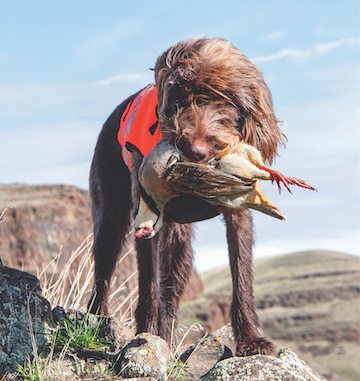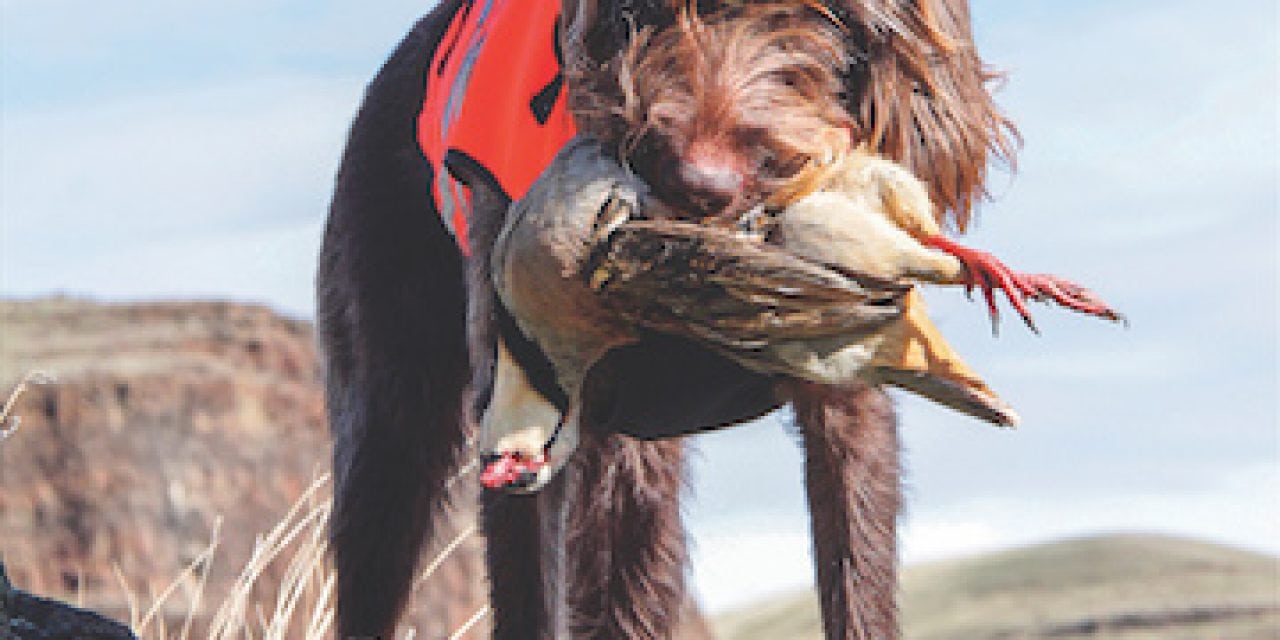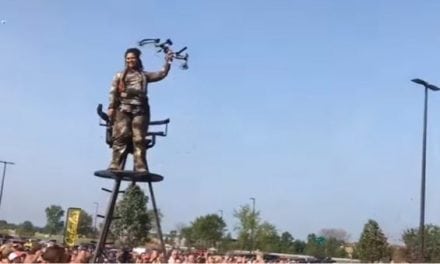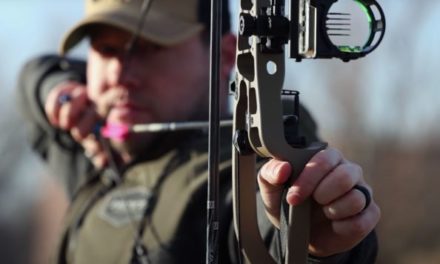It’s prime time for all-around bird hunting in the West. Make sure you’re ready.
Rushing to beat nightfall, my dad and I trudged through one last field. We’d swapped out our payloads of No. 5 shot for some No. 8s. Moving from dry to wet ground, we held our guns at the ready.
With each step, anticipation escalated in hopes a snipe would flush. When two of the long-beaked birds abruptly took wing, it startled both of us.

Chukars are challenging birds, so hunter and dog need to be in shape. (Photo by Scott Haugen)
One snipe banked left, the other went straight away, giving us perfect shot opportunities. Fortunately, we connected, marking a fitting end to a memorable day.
In addition to the Wilson’s snipes, Dad and I had secured a pair of ringneck pheasants, some valley quail, a few mallards, a hooded merganser and two tom turkeys. The day was a reminder of how good we have it when it comes to fall bird hunting throughout the West.
No matter where your fall bird hunting adventures may lead, go in prepared.
While there’s a diversity of birds to be hunted this time of year, there are also many situations to prepare for.
Here’s a look at some popular fall bird hunts, and what you need to know to find success.
MOUNTAIN GROUSE AND QUAIL
When it comes to gearing up for mountain bird hunts, mobility is the key. With so much public land to hunt throughout the West, the objective is to cover prime habitat that holds birds and isn’t heavily pressured. Enter the mountain bike.
There are miles and miles of gated roads in the woods, and many allow non-motorized access, which includes mountain bikes.
Mountain bikes are a great tool for quickly and quietly covering a lot of ground. More efficient than walking, a mountain bike allows you to hunt while at the same time assessing the habitat, reading sign and figuring out what your next move should be.
Walk these roads and it will take days to reveal valued information. Mountain bike the same roads and in less than an hour or two you’ll know whether or not you’re on the right track.
Pressure from deer hunters often pushes grouse and quail to secluded, gated roads, too. Mountain and valley quail, and ruffed grouse, can all be found using logging roads in their respective habitats.
Here they eat clover, grass and insects, and collect grit. They often get water from roadside puddles and ditches, as well. Find the birds, track them into nearby cover and get ready for some quick shooting.
DESERT GROUSE AND QUAIL
Sharptail grouse, Mearns’, Gambel’s and scaled quail are all popular upland birds to pursue this time of year. To increase the odds of success on these hunts, bring a dog or two.
Unlike hunts for forest grouse and quail, hunts in the desert are done on foot, and having the keen nose of a dog is a of great benefit. If you have two dogs, or a buddy with a well disciplined dog, then the chances of finding birds get even better.
Be sure to work into the wind or into a crosswind. The goal is to put the dog in a situation to succeed. And to do this, the wind has to be in its favor.
Desert country is also porcupine country, so be prepared. When hunting along creek beds and brush lines, try keeping the dog in sight, so if it does have a porcupine encounter, you can call the dog off. Carrying proper first aid tools for your canine companion is wise in this country.
PHEASANTS AND PARTRIDGE
Three of the West’s more popular upland birds can be hunted in the same day in some places. Ringneck pheasants and Hungarian partridge will occupy lower elevations, while mountain-dwelling chukars are found up high.
Using a dog to track cagey pheasants through tall cover greatly increases the chances of finding birds. In dry habitats, pheasants often congregate near water this time of year, where cover is thick and tall. Be ready when the dog hits point, as multiple flushes can erupt.
Hungarian partridge occupy open, rolling hillsides with short grass, often slightly higher in elevation from where pheasants range. Where pheasants will run when danger is near, huns take flight, so be ready.
For the ultimate upland test, head to the mountains above in search of chukars. These imported partridge occupy some of the roughest country in the West.
Make sure you and your dog are in shape when it comes to chukars, including your feet. Having dog boots, or a way to make them, is a must, for neglecting a dog’s feet can render it inactive for days.
TURKEYS
Fall turkey hunting is far different than hunting them in the spring, and with populations booming throughout the West, opportunities are many. Optics are the fall turkey hunter’s best friend, for the objective is to glass birds from afar, pattern their movements, then set up or stalk in, accordingly.
Though turkeys are very vocal in the fall, the toms don’t readily respond to hen calls like they do in the spring. But they do focus on feeding all day, every day. Once a flock finds a food source they stick with it, often covering the same ground, at the same time, day after day.
Knowing where turkeys move, when, is key to intercepting them. If bowhunting, use a pop-up ground blind that will hide your movement. If hunting with a shotgun, keep movement to a minimum, as a turkey’s eyesight is far superior to ours.
DOVES AND SNIPE
These two speed demons of the sky are tough to hit, but excellent eating and worth the effort. With mourning dove numbers and seasons continuing to expand throughout many states, don’t give up on them too early.
Doves can be hunted through October in some states, and by this time fall flocks have become large in number. Using decoys to entice doves your way as they travel to food, grit and water collecting areas can be effective. Placing decoys at the edges of tree lines, where doves fly by to roost, can also pay off.
Snipe are migratory birds, and live their lives amid shallow water. As fall
advances and water collects in fields and marshes, look for more snipe to arrive. Go in with modified chokes and size 7 1/2 or 8 shot, as opportunities usually come at close range, and crazy fast.
DUCKS AND GEESE
For early season ducks and geese, don’t think you need dozens of decoys. Because you’re largely hunting local birds in family units, two to six decoys may be enough.
More important than decoy numbers can be decoy movement early in the season. In states that don’t allow motorized decoys, try a Motion Ducks decoy spreader and jerk rig. A wind-aided duck decoy that works well is offered by Revolution Waterfowl.
Combine these two setups and you’ll have all the decoys and movement you’ll need to attract early season birds.
Also, don’t overdo it on the calls. While calling ducks and geese is fun, communication has less impact now than it will have later in the season. A few calls to get a bird’s attention is all you need, and once they show interest, quit calling. From there, keep movement to a minimum and let the decoys do the work.
With so many birds to hunt this fall, don’t neglect the preparation process. By being ready both mentally and physically, you’re well on your way to seeing just how good we bird hunters have it in this part of the country. n
EDITOR’S NOTE: For signed copies of Scott Haugen’s best-selling book, Western Turkey Hunting: Strategies For All Levels, which includes fall hunting strategies, send $20 (includes S&H), to Haugen Enterprises, P.O. Box 275, Walterville, OR 97489 or order online at www.scotthaugen.com.
The post Tips for Prime Time Bird Hunting appeared first on Game & Fish.
















